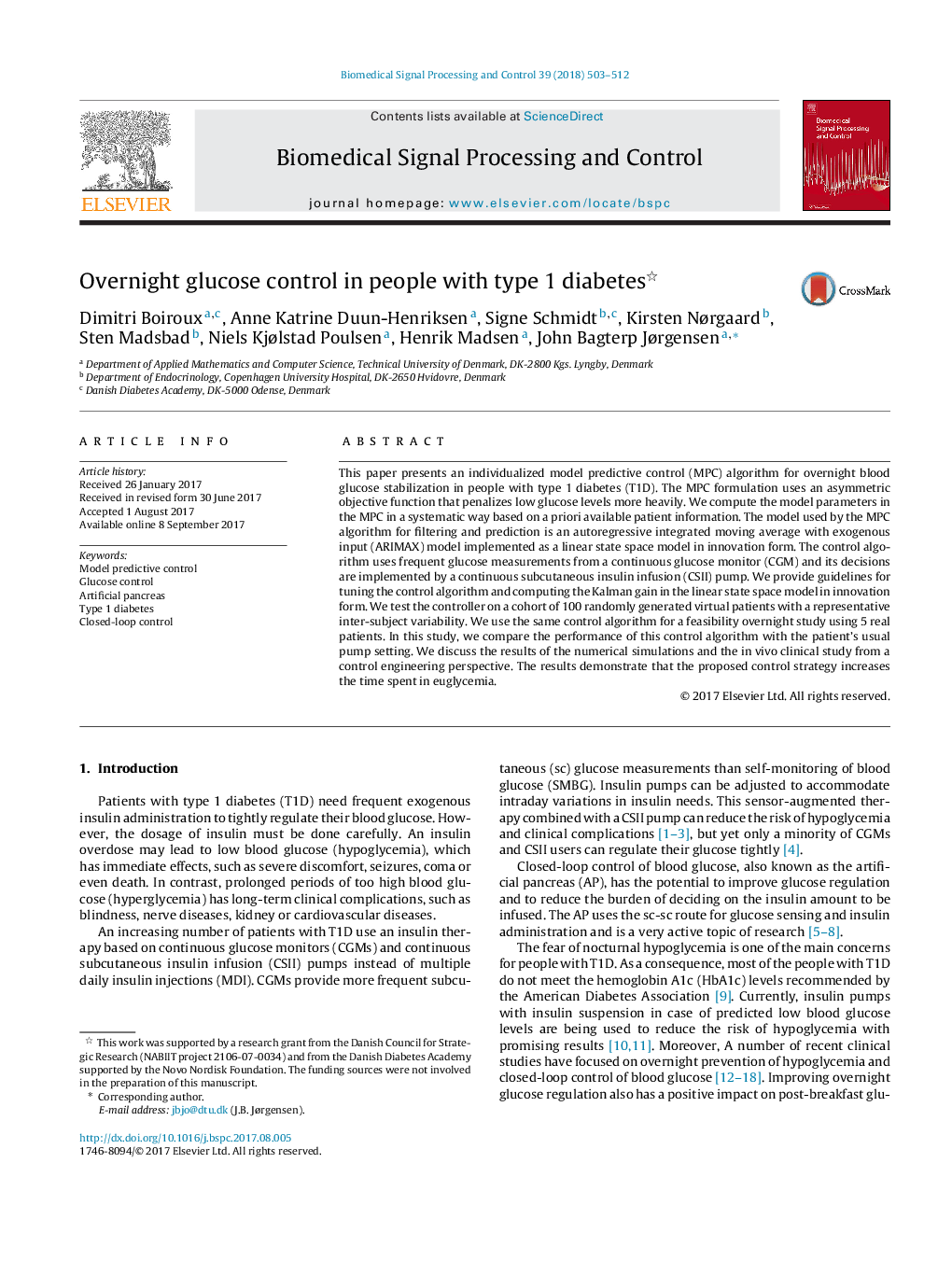| Article ID | Journal | Published Year | Pages | File Type |
|---|---|---|---|---|
| 4973506 | Biomedical Signal Processing and Control | 2018 | 10 Pages |
â¢Systematic method for tuning an individualized model predictive control (MPC) algorithm for overnight blood glucose stabilization in people with type 1 diabetes.â¢Asymmetric objective functions and safety layers to reduce the risk of hypoglycemia.â¢Tested on a random population of 100 virtual patients and on 5 real patients.â¢Time in range increased compared to an open-loop insulin therapy.
This paper presents an individualized model predictive control (MPC) algorithm for overnight blood glucose stabilization in people with type 1 diabetes (T1D). The MPC formulation uses an asymmetric objective function that penalizes low glucose levels more heavily. We compute the model parameters in the MPC in a systematic way based on a priori available patient information. The model used by the MPC algorithm for filtering and prediction is an autoregressive integrated moving average with exogenous input (ARIMAX) model implemented as a linear state space model in innovation form. The control algorithm uses frequent glucose measurements from a continuous glucose monitor (CGM) and its decisions are implemented by a continuous subcutaneous insulin infusion (CSII) pump. We provide guidelines for tuning the control algorithm and computing the Kalman gain in the linear state space model in innovation form. We test the controller on a cohort of 100 randomly generated virtual patients with a representative inter-subject variability. We use the same control algorithm for a feasibility overnight study using 5 real patients. In this study, we compare the performance of this control algorithm with the patient's usual pump setting. We discuss the results of the numerical simulations and the in vivo clinical study from a control engineering perspective. The results demonstrate that the proposed control strategy increases the time spent in euglycemia.
